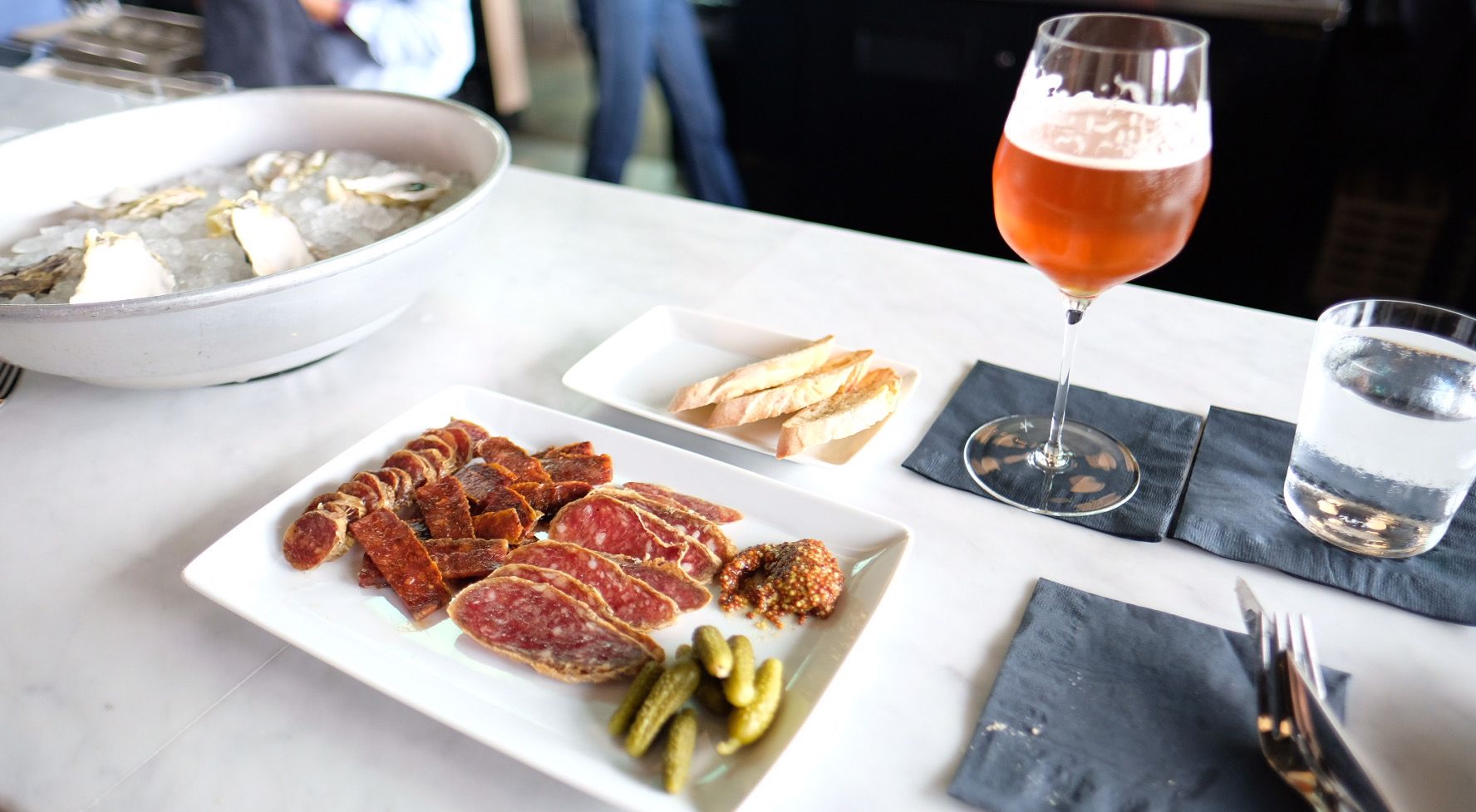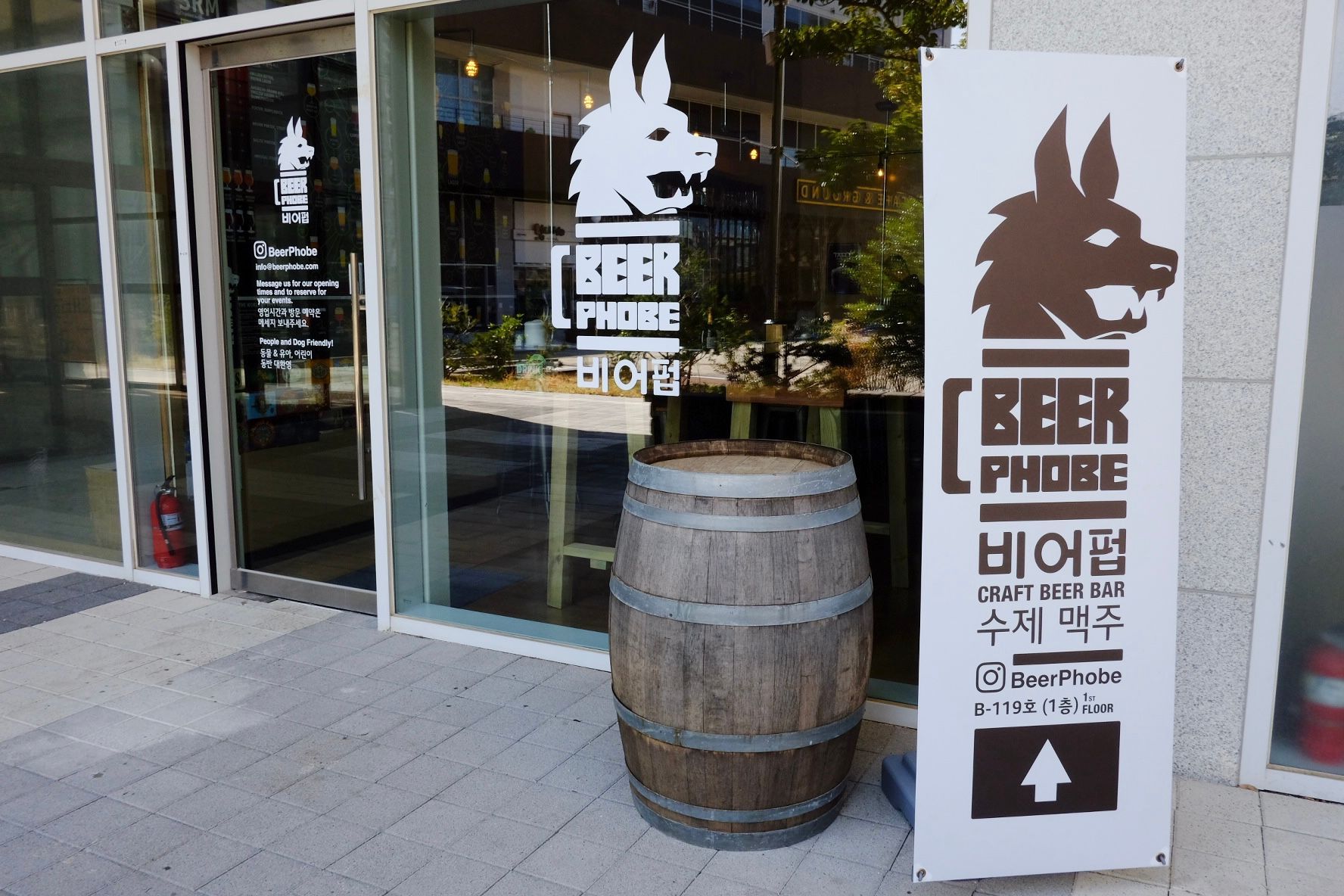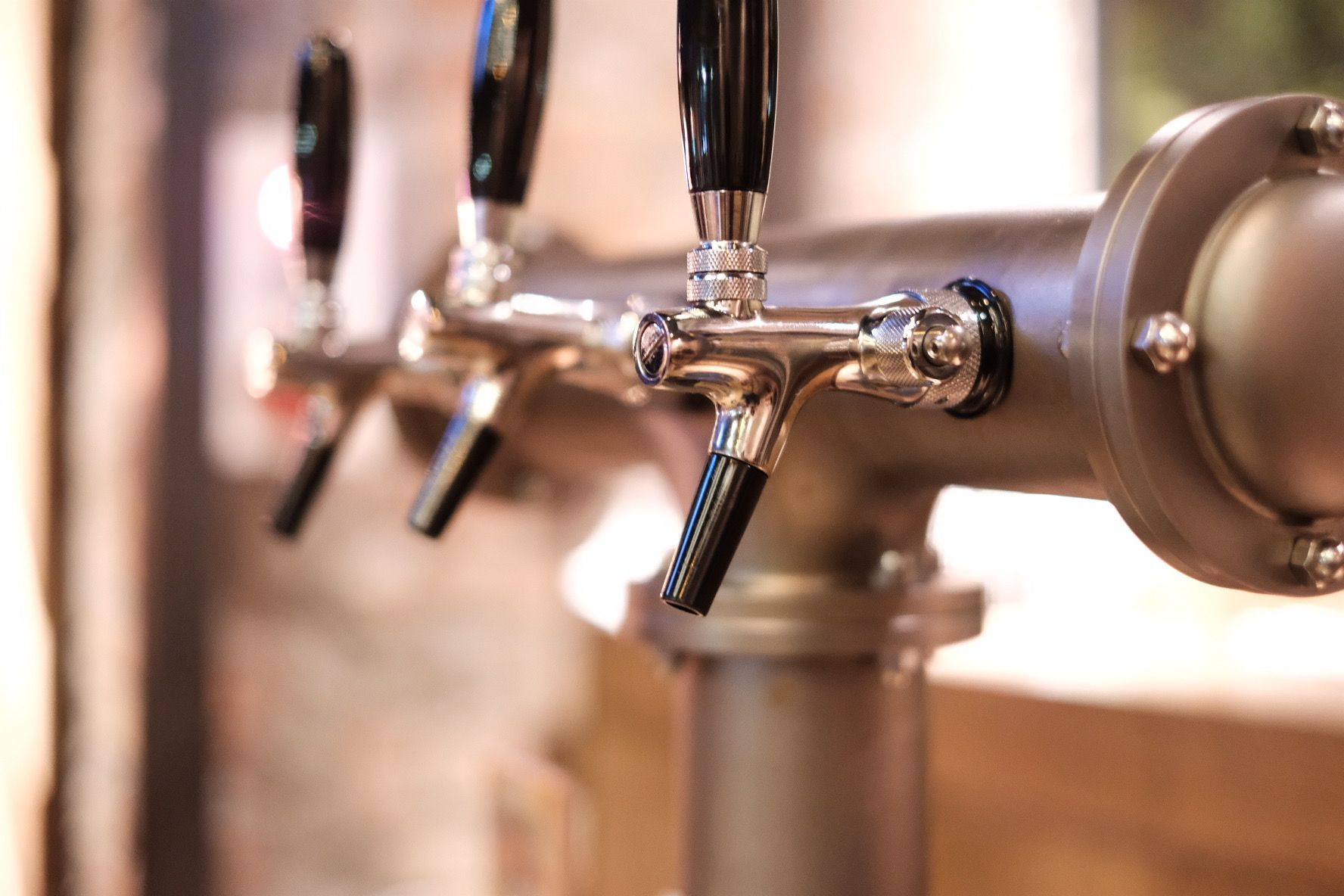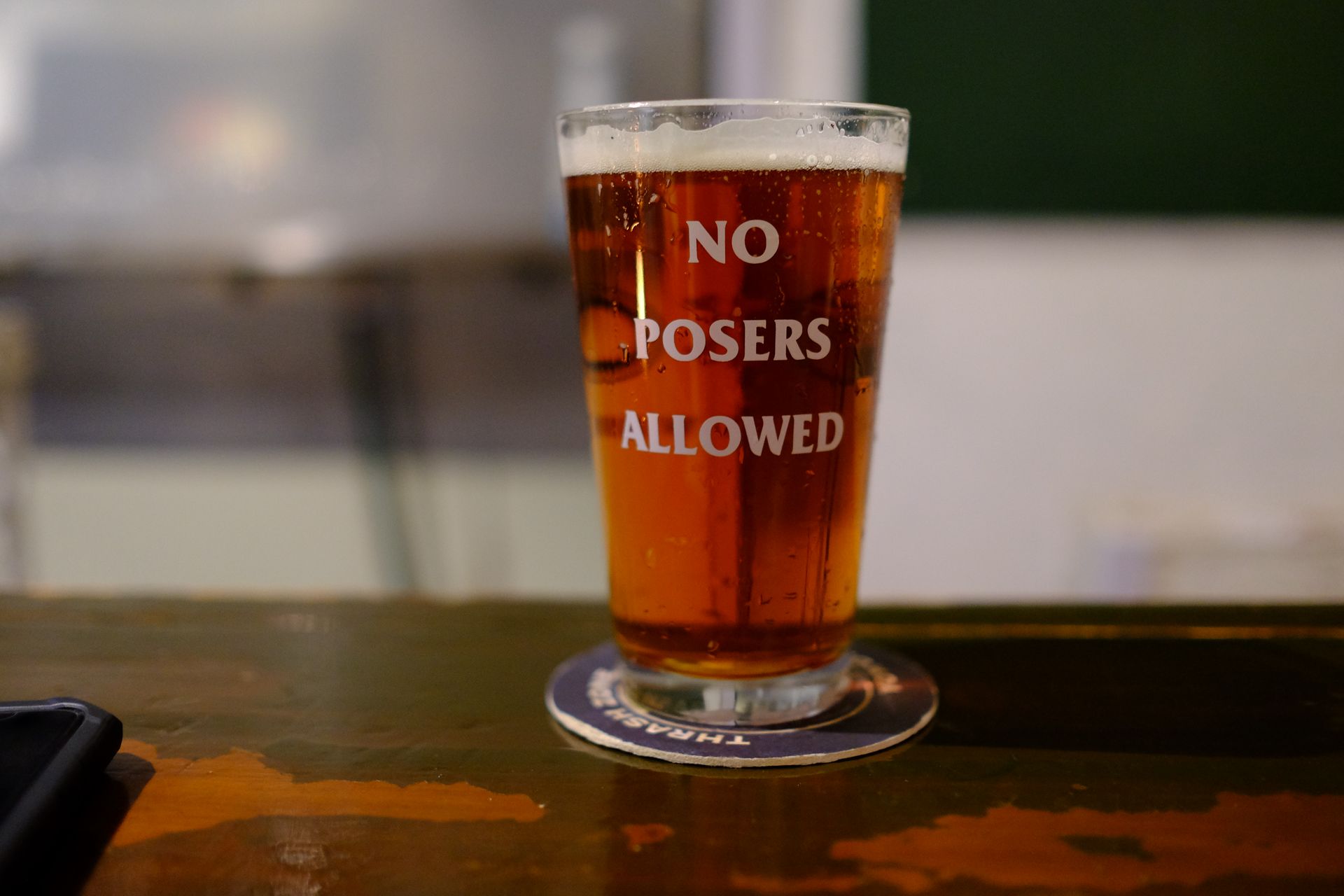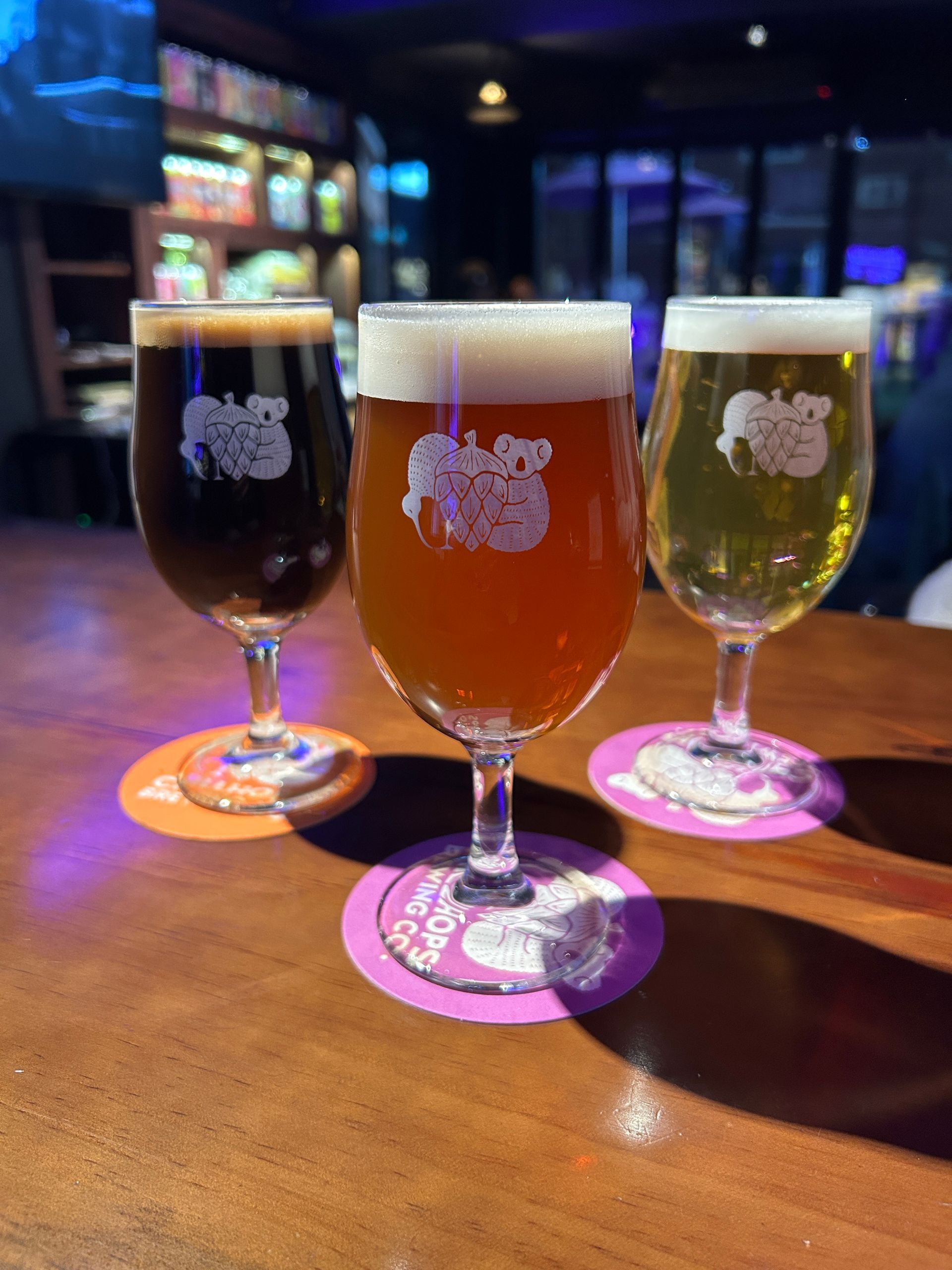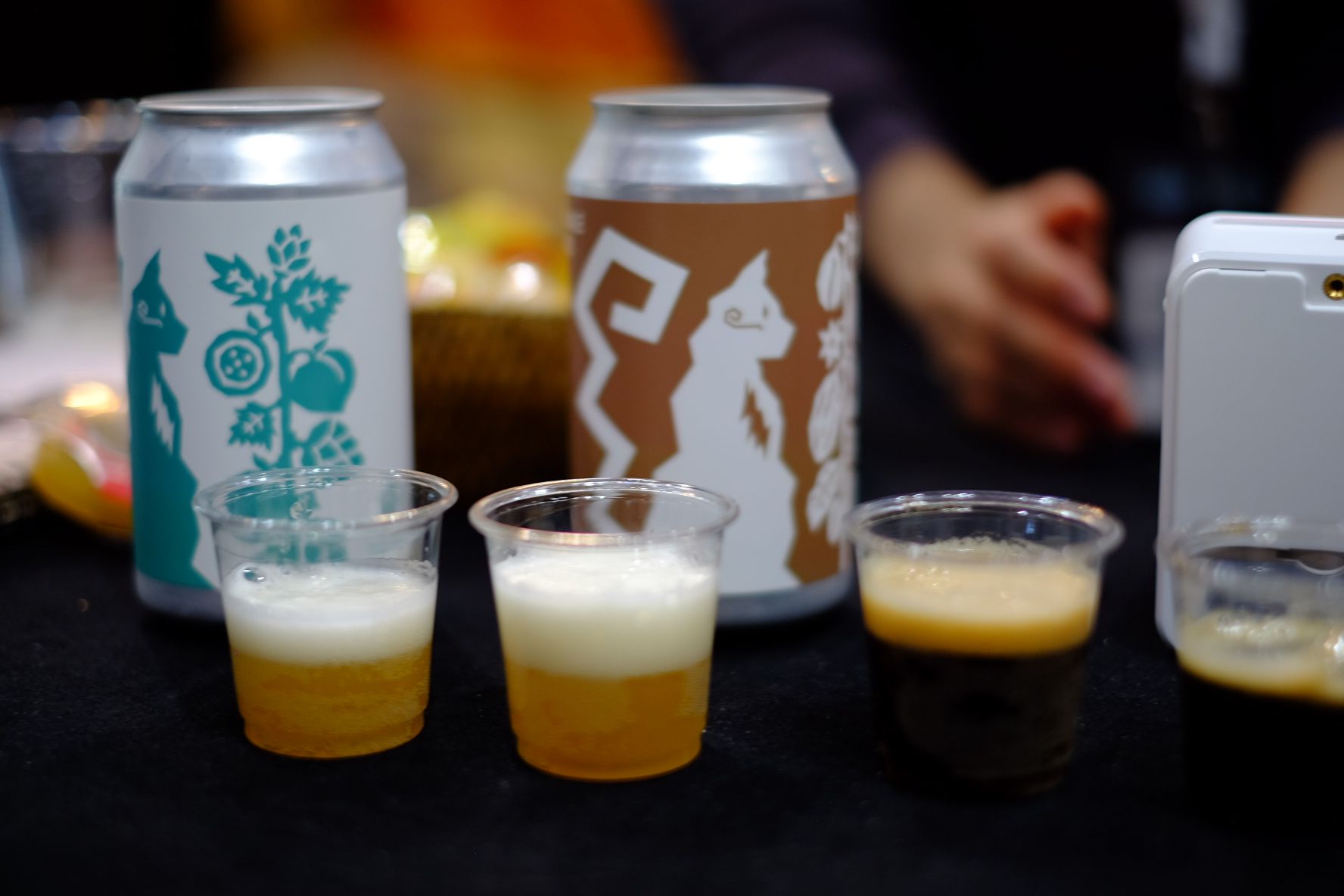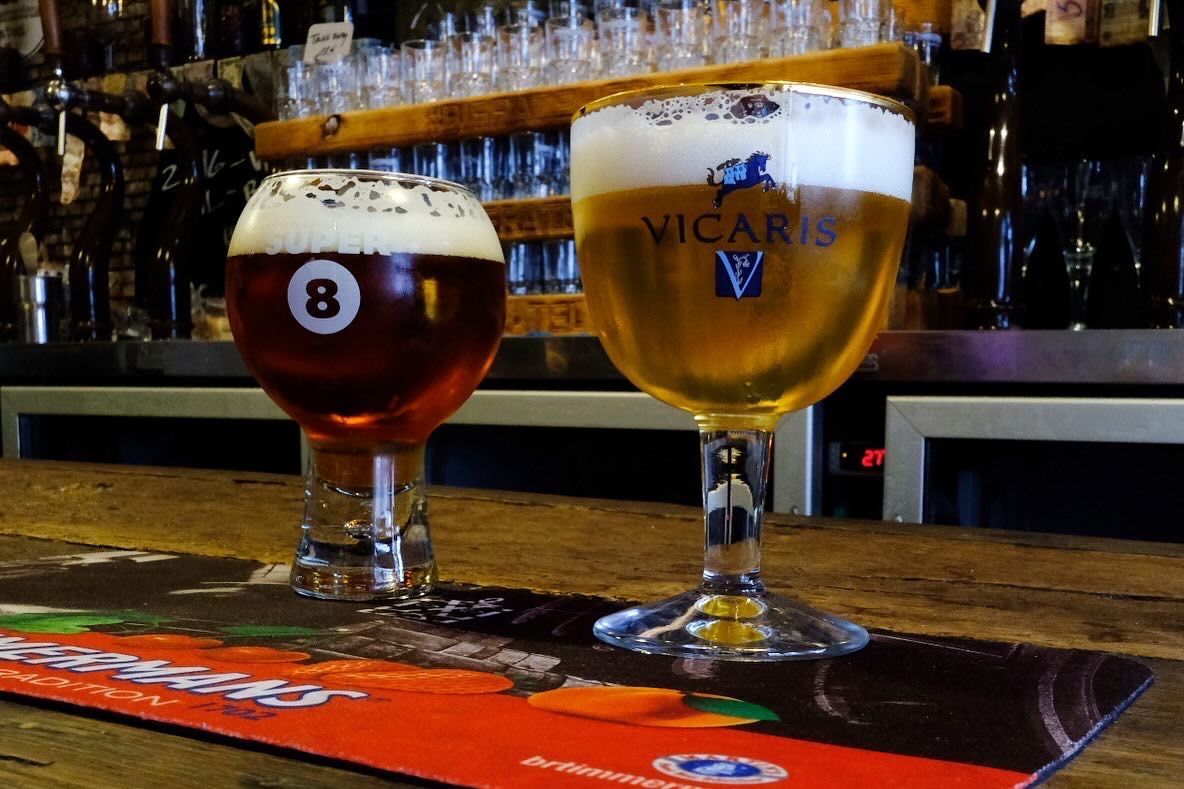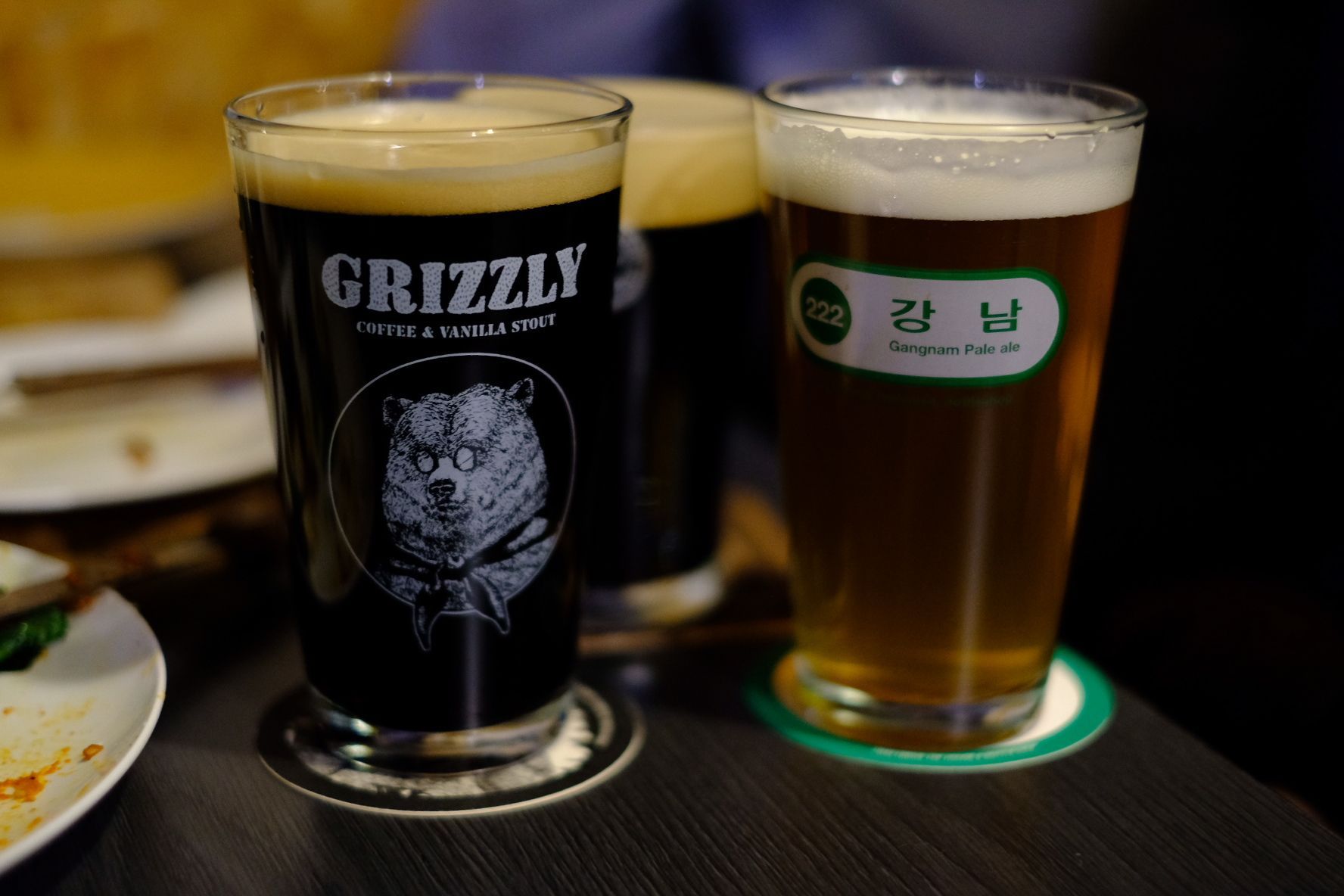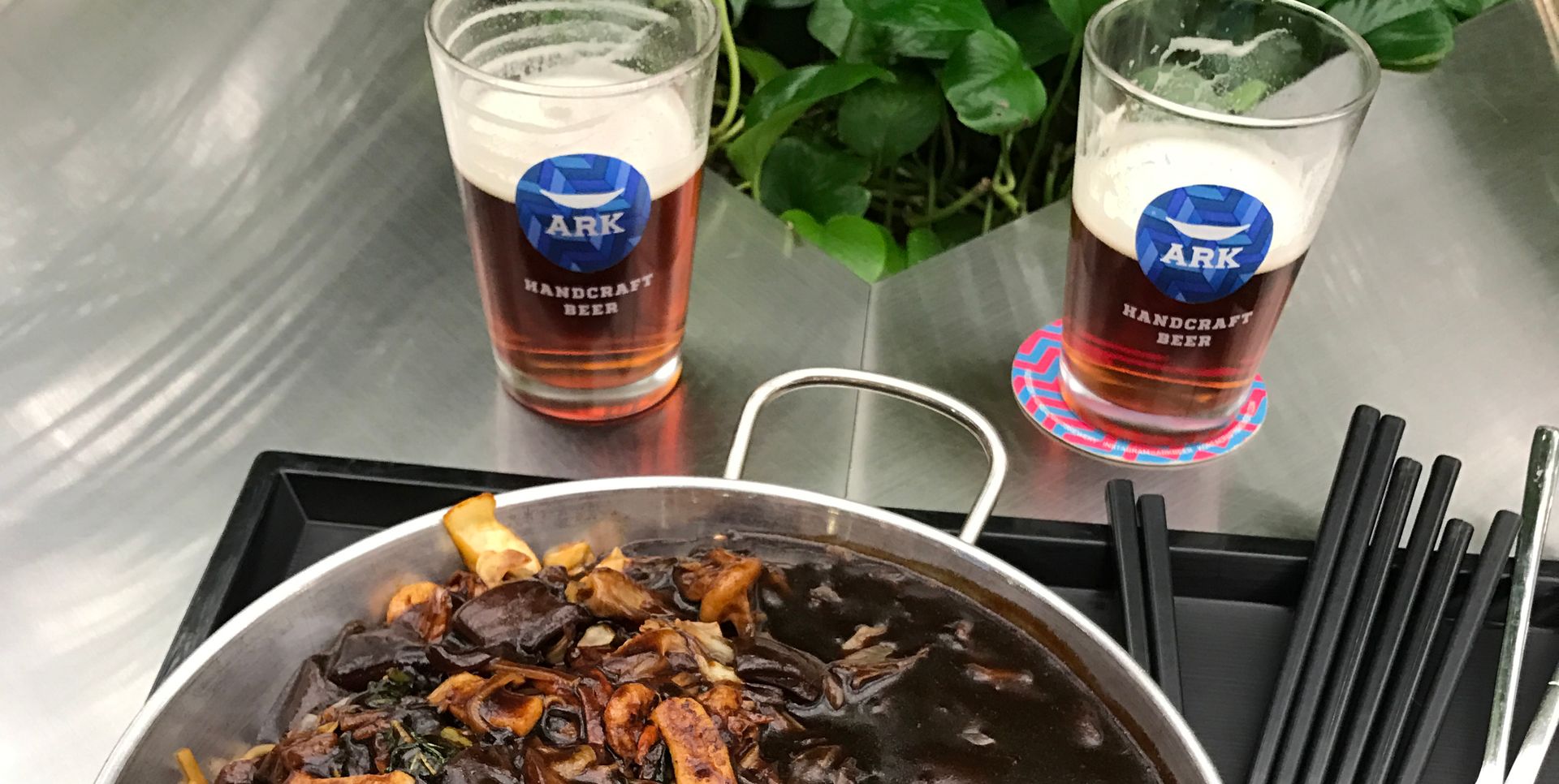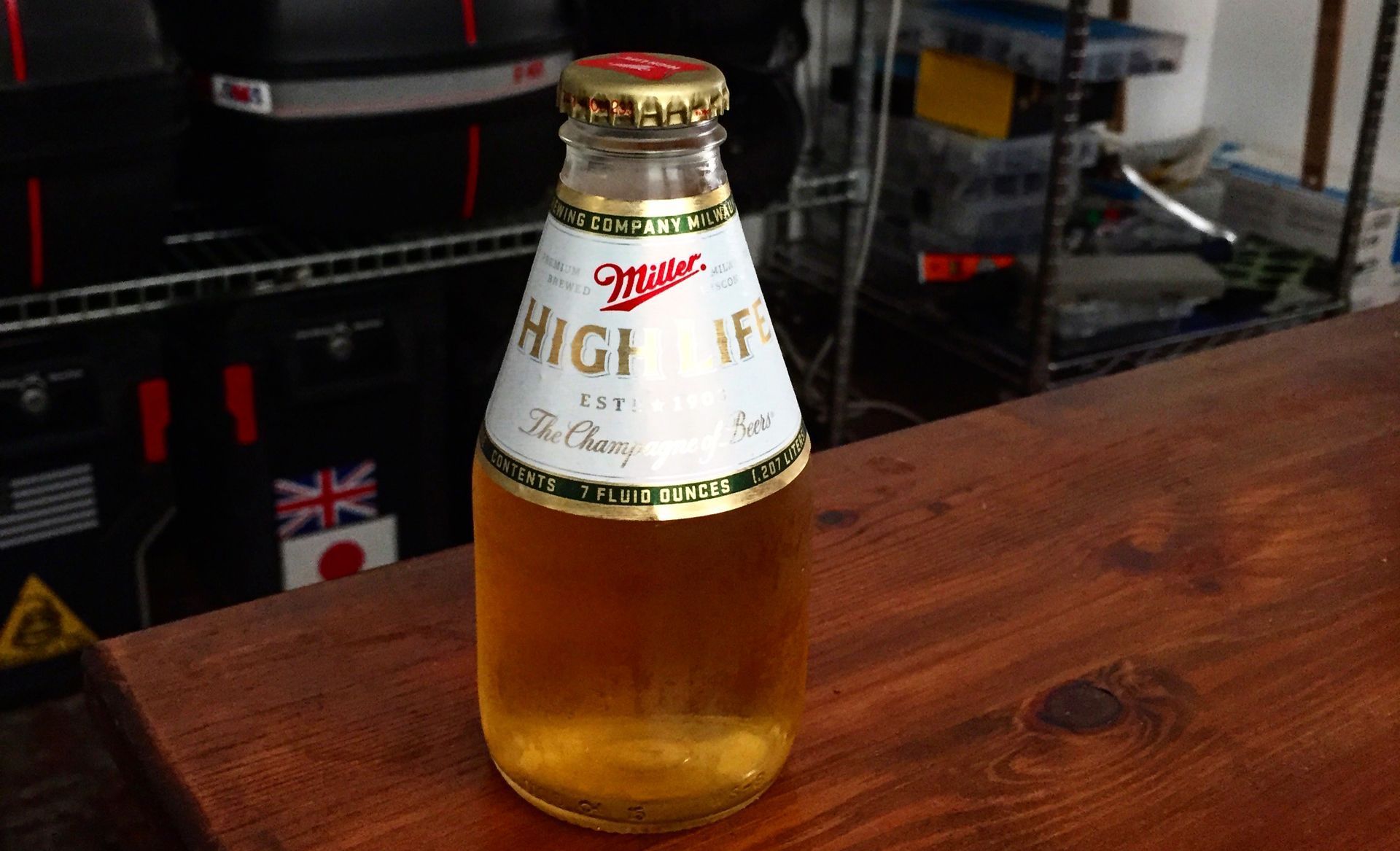Beer Packaging Matters
Same Beer, Different Package, Same Taste??? Why Packaging Matters!
같은 맥주, 다른 포장, 같은 맛??? 왜 포장이 중요할까요!
When beer drinkers argue over whether a brew tastes better in a bottle, a can, or on draft, it may sound like nitpicking. But when you grab your favorite beer from the fridge — maybe it’s a crisp German pilsner, a hoppy IPA, or a smooth stout — you notice the same thing: it never tastes exactly alike across different packages. Some swear bottles taste cleaner, others claim cans keep beer fresher, and many won’t settle for anything less than draft. As it turns out, everyone is right — because packaging truly does matter. From carbonation to oxygen exposure, from yeast content to psychology, the container shapes how you experience the very same beer. Here we will unpack some details about a few of the lesser known reasons to why your favorite craft beers may taste different due to the different packaging methods.
맥주 애호가들이 병맥주, 캔맥주, 생맥주 중 어떤 것이 더 맛있다고 논쟁할 때, 이는 마치 트집을 잡는 것처럼 들릴 수 있습니다. 하지만 냉장고에서 좋아하는 맥주를 꺼내 보면 - 상큼한 독일식 필스너, 홉이 풍부한 IPA, 부드러운 스타우트 등 - 똑같은 사실을 깨닫게 됩니다. 포장에 따라 맛이 완전히 똑같을 수는 없다는 것이죠. 어떤 사람들은 병맥주가 더 맛있다고 하고, 어떤 사람들은 캔맥주가 맥주를 더 신선하게 보관한다고 주장하며, 많은 사람들은 생맥주보다 못한 맛은 절대 용납하지 않습니다. 결국 모두의 의견이 맞습니다. 포장은 정말 중요하기 때문입니다. 탄산가스 함량부터 산소 노출, 효모 함량부터 심리적 요인까지, 용기는 같은 맥주라도 어떻게 경험하는지에 영향을 미칩니다. 좋아하는 수제 맥주의 맛이 포장 방식에 따라 달라질 수 있는, 잘 알려지지 않은 몇 가지 이유에 대해 자세히 알아보겠습니다.
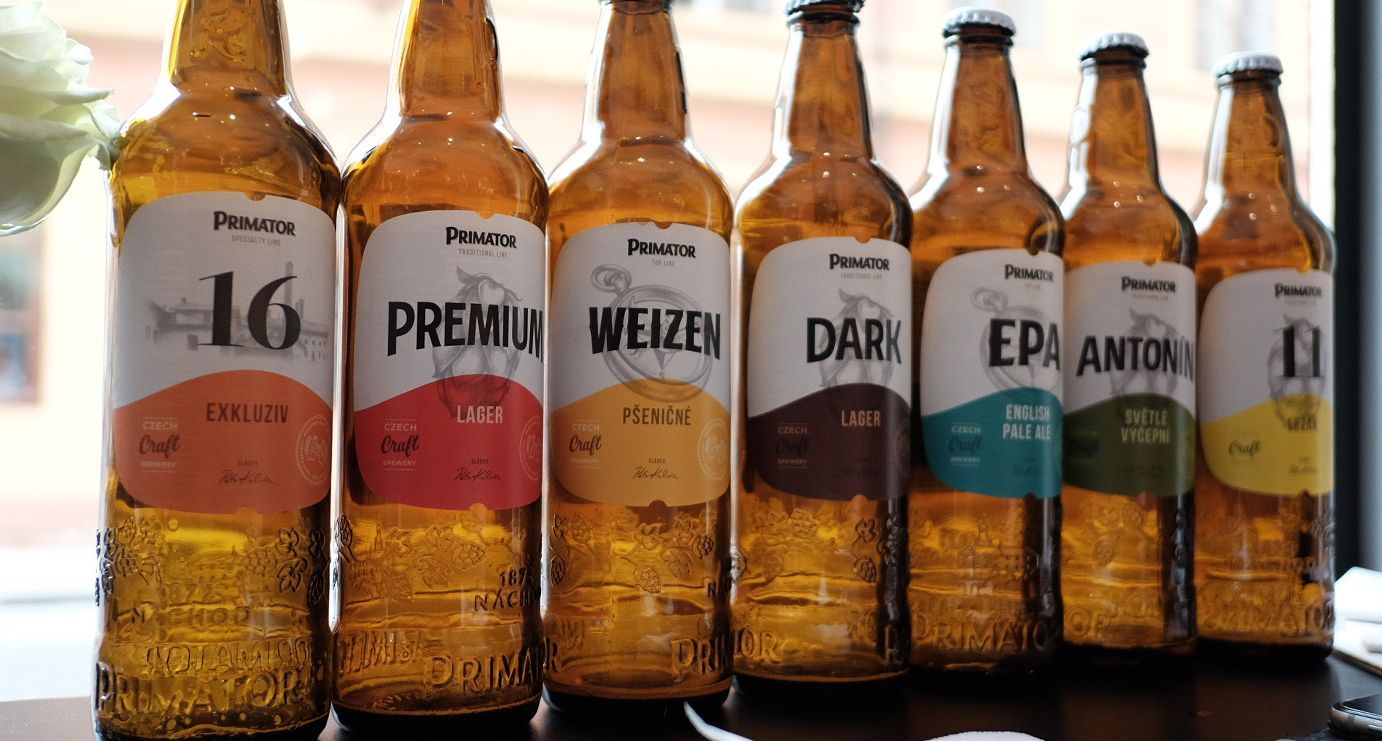
Bottle Conditioning vs. Can Conditioning
Bottle conditioning is one of the oldest methods of packaging. Brewers add a bit of sugar and yeast before sealing the bottle, allowing natural carbonation to build inside. This method creates vibrant bubbles and can even evolve flavors over time. While some breweries still stick to this technique, it has become less common. Can conditioning works the same way but is rarely used, though a handful of craft breweries (like Sierra Nevada in special releases) have done it.
Most modern breweries, however, rely on force carbonation for both bottles and cans. This means CO₂ is pumped directly into the beer before packaging, giving the brewer more control and consistency. Force carbonation pairs well with centrifuges, which remove yeast and solids for clarity and stability, but that process also changes how the beer behaves once packaged.
병 컨디셔닝 vs. 캔 컨디셔닝
병 컨디셔닝은 가장 오래된 포장 방법 중 하나입니다. 양조업자들은 병을 밀봉하기 전에 약간의 설탕과 효모를 첨가하여 병 안에 자연적인 탄산이 생성되도록 합니다. 이 방법은 풍부한 거품을 생성하고 시간이 지남에 따라 풍미가 변화할 수도 있습니다. 일부 양조업체는 여전히 이 기술을 고수하고 있지만, 최근에는 덜 보편화되었습니다. 캔 컨디셔닝도 같은 방식으로 진행되지만 거의 사용되지 않습니다. 하지만 시에라 네바다처럼 특별 출시된 몇몇 수제 맥주 양조업체에서는 이 방법을 사용하고 있습니다.
하지만 대부분의 현대 양조업체는 병과 캔 모두 강제 탄산화 방식을 사용합니다. 이는 포장 전에 이산화탄소를 맥주에 직접 주입하여 양조업자가 맥주를 더욱 효율적으로 관리하고 일관성을 유지할 수 있도록 합니다. 강제 탄산화는 효모와 고형분을 제거하여 투명도와 안정성을 높이는 원심분리기와 잘 어울리지만, 이 과정은 포장 후 맥주의 배송에도 영향을 미칩니다.
Centrifuge: Friend or Foe?
Centrifuges are amazing tools: they spin beer at high speed, pulling out yeast and solids to make the liquid clearer and more stable. But here’s the catch: When too much yeast is removed, there’s no natural re-fermentation, and if even a trace of oxygen sneaks in during packaging, the beer can quickly lose vibrancy. Without proteins and yeast to support foam, the head can collapse, leaving the beer tasting flat.
This is why the same beer might taste brilliant on draft but fall short when cracked open from a can.
원심분리기: 아군인가 적군인가?
원심분리기는 놀라운 도구입니다. 맥주를 고속으로 회전시켜 효모와 고형분을 제거하여 액체를 더 투명하고 안정적으로 만듭니다. 하지만 여기에 문제가 있습니다. 효모가 너무 많이 제거되면 자연적인 재발효가 일어나지 않고, 포장 과정에서 산소가 조금이라도 스며들면 맥주의 생동감이 빠르게 사라집니다. 거품을 지탱해 줄 단백질과 효모가 없으면 거품이 꺼져 맥주 맛이 밋밋해질 수 있습니다. 이것이 바로 같은 맥주라도 생맥주에서는 훌륭한 맛이 나지만 캔에서 따서 마시면 맛이 떨어지는 이유입니다.
Centrifuged + Force Carbonated
Many centrifuge-using breweries prefer force carbonation instead, because it avoids the extra step of re-adding yeast and makes the beer more predictable in terms of flavor, carbonation level, and shelf life.
CO₂ Absorption Issues
- Force carbonation relies on beer holding dissolved CO₂.
- If centrifuging is too aggressive (or if the beer is packaged too warm or too quickly), the CO₂ may not fully absorb.
- That leads to a beer that pours with weak fizz and lacks mouthfeel.
Oxygen Pickup at Packaging
- After centrifuging, beer is more vulnerable to oxidation because it’s “cleaner” and has less yeast to scavenge oxygen.
- Even a small amount of oxygen introduced at canning can dull flavors, reduce perceived carbonation, and make the beer feel flat or “stale” quickly.
Low Residual Proteins & Polyphenols
- Yeast, proteins, and hop particles help beer hold onto foam and bubbles.
- By spinning most of these out, the beer may lose its head retention and body. The result is beer that seems “dead” or thin when poured.
Carbonation Set Too Low
- Some breweries aiming for a smooth mouthfeel (especially with hazy IPAs or stouts) deliberately set carbonation lower.
- Combine that with centrifuge stripping, and the beer can taste especially flat compared to bottle-conditioned or “live” beers.
Centrifuge + poor canning often = a beer that feels “flat” in the can.
- Too much yeast removed: No natural conditioning possible unless yeast is re-added.
- Oxygen sensitivity: With yeast gone, even tiny oxygen exposure at packaging can dull carbonation and flavor.
- Flat-tasting beer risk: Without proteins and yeast, foam stability and mouthfeel can suffer.
- Breweries must rely on force carbonation for both bottles and cans. Inconsistency in the process can be detrimental.
Centrifuge use itself isn’t bad — many top craft breweries use them. But if carbonation levels aren’t dialed in, or if oxygen sneaks in at packaging, the result can be a beer that feels flat or lifeless out of the can. Bottle- or can-conditioned beers avoid this because the yeast continues to create natural carbonation inside the package.
원심분리 + 강제 탄산화
많은 원심분리기 사용 양조장에서는 강제 탄산화를 선호하는데, 이는 효모를 다시 첨가하는 추가 단계를 생략하고 맥주의 풍미, 탄산화 수준 및 유통기한 측면에서 맥주의 예측 가능성을 높이기 때문입니다.
CO₂ 흡수 문제
* 강제 탄산화는 맥주에 용해된 CO₂가 유지되는 방식에 의존합니다.
* 원심분리가 너무 강하거나 맥주를 너무 뜨겁거나 너무 빨리 포장하는 경우, CO₂가 완전히 흡수되지 않을 수 있습니다.
* 이로 인해 맥주의 거품이 약하고 입안에서 느껴지는 느낌이 부족해집니다.
포장 단계의 산소 흡수
* 원심분리 후 맥주는 "깨끗"해지고 산소를 흡수하는 효모가 적기 때문에 산화에 더 취약합니다.
* 캔 제조 과정에서 소량의 산소가 유입되더라도 풍미가 둔해지고, 탄산감이 감소하며, 맥주가 빠르게 밋밋하거나 "오래된" 느낌을 줄 수 있습니다.
낮은 잔류 단백질 및 폴리페놀
* 효모, 단백질, 홉 입자는 맥주가 거품을 유지하는 데 도움을 줍니다.
* 이러한 성분들이 대부분 제거되면 맥주의 거품 유지력과 바디감이 떨어질 수 있습니다. 그 결과, 따랐을 때 맥주가 "죽은" 것처럼 보이거나 묽어 보일 수 있습니다.
탄산 농도가 너무 낮게 설정됨
* 부드러운 식감을 목표로 하는 일부 양조장(특히 탁한 IPA나 스타우트)은 의도적으로 탄산 농도를 낮게 설정합니다.
* 여기에 원심분리기를 사용하면 병에 담긴 맥주나 "생맥주"에 비해 특히 밋밋한 맛이 날 수 있습니다.
원심분리기와 불량한 캔 포장은 종종 캔에서 "밋밋한" 맥주가 됩니다.
* 효모를 너무 많이 제거하면 효모를 다시 첨가하지 않는 한 자연적인 컨디셔닝이 불가능합니다.
* 산소 민감도: 효모가 제거되면 포장 단계에서 아주 작은 산소 노출만으로도 탄산과 풍미가 저하될 수 있습니다.
* 밋밋한 맛의 맥주 위험: 단백질과 효모가 없으면 거품의 안정성과 식감이 저하될 수 있습니다.
* 양조장은 병맥주와 캔맥주 모두 강제 탄산화에 의존해야 합니다. 공정의 일관성 부족은 해로울 수 있습니다.
원심분리기 사용 자체는 나쁘지 않습니다. 많은 유명 수제 맥주 양조장에서 원심분리기를 사용하고 있습니다. 하지만 탄산화 수준을 제대로 조절하지 않거나 포장재에 산소가 스며들면 캔에서 꺼낸 맥주가 밋밋하거나 생기가 없어 보일 수 있습니다. 병맥주나 캔맥주는 효모가 포장재 내부에서 계속해서 자연 탄산화를 생성하기 때문에 이러한 현상을 피할 수 있습니다.
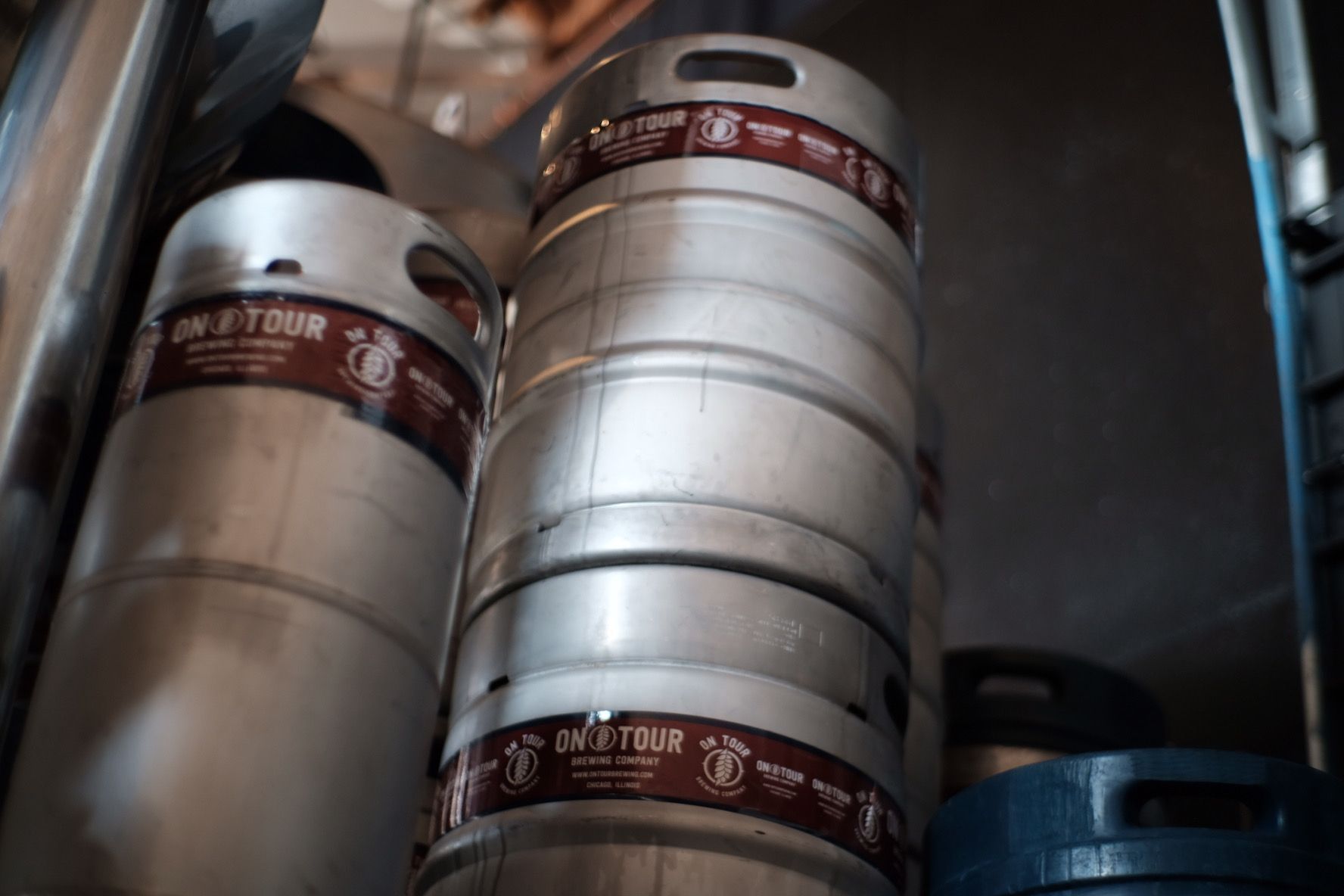
Why Kegged Beer Tastes Fresher
Kegged beer often feels livelier for one simple reason: it lives under pressure. Kegs are filled in a closed system, keeping oxygen at bay, and they’re kept under steady CO₂ pressure at the bar. This ensures carbonation stays locked in until the very moment it’s poured.
- Cans and bottles don’t get that ongoing protection. Once sealed, whatever carbonation and oxygen levels they have are locked in for good. If the canning or bottling process isn’t perfect, those flaws are noticeable. Draft beer isn’t flawless — dirty lines or poorly managed gas systems can ruin a pint — but when handled well, draft beer offers the freshest experience and the most vibrant version.
- Cans, especially from small breweries with budget lines, can suffer from oxygen pickup and seam inconsistencies.
Low-End Canning: The Craft Beer Achilles’ Heel
Cans are trendy, portable, and recyclable, but canning well isn’t cheap. High-quality, automated canning lines cost a fortune, and smaller breweries often start with budget machines or hire mobile canning services. These options make canning accessible, but they can introduce problems such as:
Lower Fill Precision
- Inconsistent fill heights can trap too much or too little oxygen in the can.
- Overfilled cans may foam excessively; under-filled ones leave too much headspace.
Weak Seam Quality
- The seam (lid seal) is critical — poor seams can slowly leak CO₂ or let in oxygen.
- High-end seamers measure and adjust seams automatically; low-end ones may require constant manual calibration.
Higher Oxygen Pickup
- Dissolved oxygen is a killer for craft beer flavor and carbonation.
- Cheap lines may lack CO₂ purging (flushing out oxygen from the can before filling), leaving oxygen trapped inside.
Slower Throughput
- Smaller machines fill fewer cans per minute, increasing the risk of beer warming or foaming during long runs.
- Foaming = loss of carbonation before the can is sealed.
Minimal Automation
- Breweries relying on manual or semi-manual lines depend heavily on staff skill and consistency.
- Human error (delayed seaming, inconsistent purging) increases variability can-to-can.
That’s why your favorite local beer may taste amazing on tap but disappoint and a little lifeless when poured from a can at home. Kegs are forgiving; cans are not.
Are Bottles Safer for Small Breweries?
Yes and no:
- Bottles: Cheaper equipment, great for natural conditioning, but vulnerable to light and oxygen seepage through caps.
- Cans: Lightproof, more stable long-term, but unforgiving if the equipment isn’t dialed in.
For small breweries, bottles are often “safer” until they can invest in quality canning gear.
Bottling equipment is usually more affordable, and bottle conditioning provides a reliable way to achieve carbonation. But bottles have downsides too. Unless they’re brown glass, they allow light to sneak in and damage the beer. Oxygen can also creep in through the cap. Cans, on the other hand, are lightproof and generally keep beer fresher longer — but only if the brewery has invested in the right canning technology.
In practice, many small breweries stick with bottles early on, then shift to cans once they can afford the equipment that ensures quality.
Real-World Packaging Choices
Breweries around the world make packaging decisions based on tradition, style, and market demand. Chimay, Cantillon, and Russian River stick with bottles because their Belgian ales and sours thrive with natural conditioning. Oskar Blues went all-in on cans and helped start the American craft can revolution. Sierra Nevada embraced cans for freshness and portability, while hazy IPA producers like Tree House, Trillium, and Other Half rely on cans exclusively since their beers are extremely sensitive to oxygen and light.
Others, like Firestone Walker and Rodenbach, use both. Everyday beers go into cans, while premium, aging-worthy beers stay in bottles.
케그 맥주가 더 신선한 맛인 이유
케그 맥주는 한 가지 간단한 이유 때문에 더 생동감 있게 느껴지는 경우가 많습니다. 바로 압력 하에서 맥주가 유지되기 때문입니다. 케그는 밀폐된 시스템에 담겨 산소를 차단하고, 바에서는 일정한 이산화탄소 압력을 유지합니다. 덕분에 따르는 순간까지 탄산가스가 그대로 유지됩니다.
* 캔과 병은 이러한 지속적인 보호 기능을 제공하지 않습니다. 일단 밀봉되면 탄산가스와 산소 농도가 영구적으로 고정됩니다. 캔이나 병입 과정이 완벽하지 않으면 이러한 결함이 눈에 띄게 나타납니다. 생맥주라고 해서 완벽한 것은 아닙니다. 더러운 배관이나 관리가 제대로 되지 않은 가스 시스템은 파인트 맥주를 망칠 수 있습니다. 하지만 제대로 관리하면 생맥주는 가장 신선하고 풍부한 맛을 선사합니다.
* 캔, 특히 예산이 부족한 소규모 양조장의 캔은 산소 흡수 및 이음새의 불균일로 어려움을 겪을 수 있습니다.
저가 캔 제조: 수제 맥주의 아킬레스건
캔은 트렌디하고 휴대가 간편하며 재활용이 가능하지만, 제대로 된 캔 제조는 비용이 만만치 않습니다. 고품질 자동 캔닝 라인은 비용이 많이 들며, 소규모 양조장은 저렴한 기계로 시작하거나 이동식 캔닝 서비스를 이용하는 경우가 많습니다. 이러한 옵션은 캔닝을 용이하게 하지만 다음과 같은 문제를 야기할 수 있습니다.
낮은 충전 정밀도
* 충전 높이가 일정하지 않으면 캔에 산소가 너무 많이 또는 너무 적게 갇힐 수 있습니다.
* 캔을 너무 많이 채우면 거품이 과도하게 발생할 수 있으며, 적게 채우면 헤드스페이스가 너무 커집니다.
불량한 이음새 품질
* 이음새(뚜껑 밀봉)는 매우 중요합니다. 불량한 이음새는 이산화탄소를 천천히 누출시키거나 산소를 유입시킬 수 있습니다.
* 고급 시머는 이음새를 자동으로 측정하고 조정하지만, 저가형 시머는 지속적인 수동 보정이 필요할 수 있습니다.
높은 산소 흡수량
* 용존 산소는 크래프트 맥주의 풍미와 탄산화에 치명적입니다.
* 저렴한 라인은 이산화탄소 퍼징(캔을 채우기 전에 산소를 제거하는 기능)이 부족하여 산소가 캔 내부에 갇힐 수 있습니다.
처리량 감소
* 소형 기계는 분당 캔을 채우는 양이 적어 장시간 작동 시 맥주가 데워지거나 거품이 생길 위험이 높습니다.
* 거품 발생 = 캔 밀봉 전 탄산 손실
최소 자동화
* 수동 또는 반수동 라인에 의존하는 양조장은 직원의 기술과 일관성에 크게 의존합니다.
* 인적 오류(시밍 지연, 불규칙한 퍼징)는 캔 간 변동성을 증가시킵니다.
좋아하는 지역 맥주를 생맥주에서는 훌륭하게 즐길 수 있지만, 집에서 캔을 따랐을 때는 실망스럽고 생기가 없는 경우가 있습니다. 케그는 괜찮지만 캔은 그렇지 않습니다.
소규모 양조장에서 병맥주가 더 안전할까요?
예와 아니오:
* 병맥주: 장비가 저렴하고 자연 건조에 적합하지만, 뚜껑을 통해 빛과 산소가 스며들면 취약합니다.
* 캔맥주: 차광성이 뛰어나 장기적으로 안정적이지만, 장비가 제대로 작동하지 않으면 문제가 발생합니다.
소규모 양조장의 경우, 고품질 캔 장비에 투자하기 전까지는 병맥주가 더 "안전"한 경우가 많습니다.
보틀링 장비는 일반적으로 더 저렴하며, 병맥주 건조는 탄산을 얻는 신뢰할 수 있는 방법을 제공합니다. 하지만 병맥주에도 단점이 있습니다. 갈색 유리가 아니면 빛이 새어 들어와 맥주를 손상시킬 수 있습니다. 산소 또한 뚜껑을 통해 스며들 수 있습니다. 반면 캔은 차광성이 뛰어나 맥주를 더 오래 신선하게 보관할 수 있지만, 이는 양조장이 적절한 캔 제조 기술에 투자했을 경우에만 가능합니다. 실제로 많은 소규모 양조장들은 초기에는 병을 고수하다가 품질을 보장하는 장비를 구매할 여력이 생기면 캔으로 전환합니다.
실제 포장 선택
전 세계 양조장들은 전통, 스타일, 그리고 시장 수요를 바탕으로 포장을 결정합니다. 쉬메이, 칸티용, 러시안 리버는 벨기에 에일과 사워가 자연 발효 과정을 거치면서 풍미가 좋아지기 때문에 병을 고수합니다. 오스카 블루스는 캔에 모든 것을 투자하여 미국 수제 캔 혁명을 일으켰습니다. 시에라 네바다는 신선도와 휴대성을 위해 캔을 채택했고, 트리 하우스, 트릴리움, 아더 하프와 같은 헤이지 IPA 생산업체들은 맥주가 산소와 빛에 매우 민감하기 때문에 캔에만 의존합니다.
파이어스톤 워커와 로덴바흐와 같은 다른 양조업체들은 캔과 병을 모두 사용합니다. 일상적으로 마시는 맥주는 캔에 담지만, 오래 보관할 가치가 있는 프리미엄 맥주는 병에 담아 보관합니다.
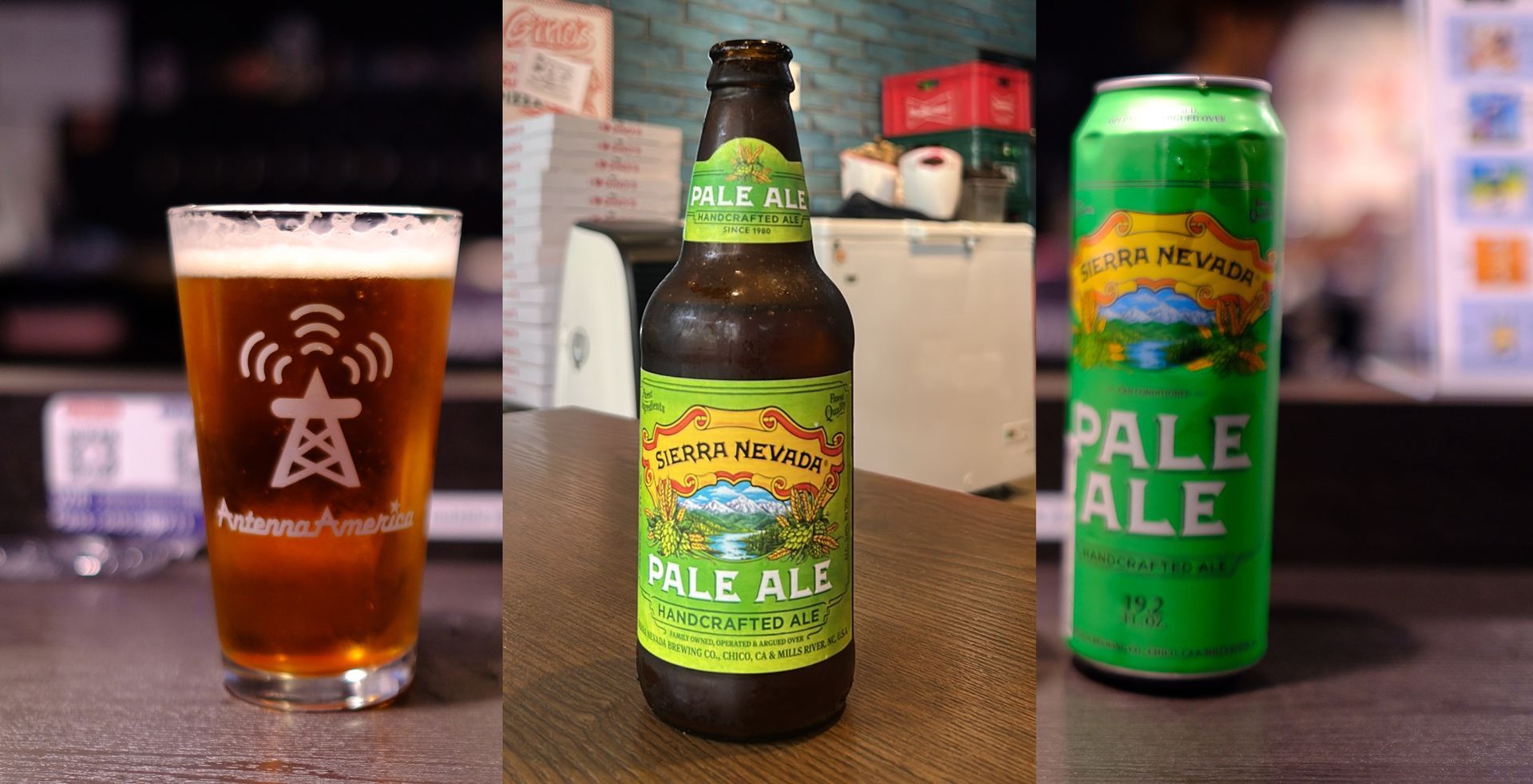
The Same Beer, Different Experience
Take Sierra Nevada Pale Ale as an example. Drink it straight from the bottle and the narrow neck traps carbonation, delivering sharp, bitter snap but muting aromas. Pour that same bottle into a glass, and the beer feels softer and more balanced, with Cascade hops and caramel malt shining through. From a can, the beer can feel muted if drunk straight, but poured into a glass it mirrors draft closely. And on draft, when the bar handles it right, it’s the most aromatic and lively version of all.
- Bottle (straight): Sharp, prickly, crisper bitterness; aromas muted.
- Bottle (poured): Softer, balanced, aromas bloom (citrus, pine, caramel malt).
- Can (straight): Convenient but sometimes muted or “softer.”
- Can (poured): Close to draft; aromatic and balanced.
- Draft: At its best, the freshest and most aromatic; but quality depends on the bar’s system.
The same applies to Jever Pilsner: the bottle tastes snappier, drier, and sharper, while the can feels rounder and sometimes flatter — even though it’s the same beer.
같은 맥주, 다른 경험
시에라 네바다 페일 에일을 예로 들어보겠습니다. 병에서 바로 마시면 좁은 목이 탄산을 가두어 날카롭고 쌉싸름하지만 은은한 향을 선사합니다. 같은 병을 잔에 따라 마시면 캐스케이드 홉과 카라멜 몰트의 풍미가 더해져 더욱 부드럽고 균형 잡힌 맥주를 느낄 수 있습니다. 캔에 따라 마시면 바로 마시면 은은한 향이 날 수 있지만, 잔에 따라 마시면 생맥주와 매우 흡사합니다. 바에서 제대로 관리한 생맥주는 가장 향긋하고 생동감 넘치는 맥주를 선사합니다.
* 병(스트레이트): 날카롭고, 톡 쏘는 듯, 상큼한 쓴맛, 은은한 향.
* 병(따랐을 때): 더 부드럽고 균형 잡히고, 향이 풍부합니다(감귤, 소나무, 카라멜 몰트).
* 캔(스트레이트): 편리하지만 때로는 은은하거나 "더 부드럽습니다."
* 캔(따랐을 때): 생맥주와 비슷하고, 향긋하고 균형 잡혀 있습니다.
* 생맥주: 최상의 상태일 때 가장 신선하고 향긋합니다. 하지만 품질은 바의 시스템에 따라 달라집니다.
예버 필스너도 마찬가지입니다. 병은 더 시원하고, 드라이하고, 날카로운 맛이 나는 반면, 캔은 더 둥글고 때로는 납작한 느낌이 듭니다. 같은 맥주인데도 말이죠.
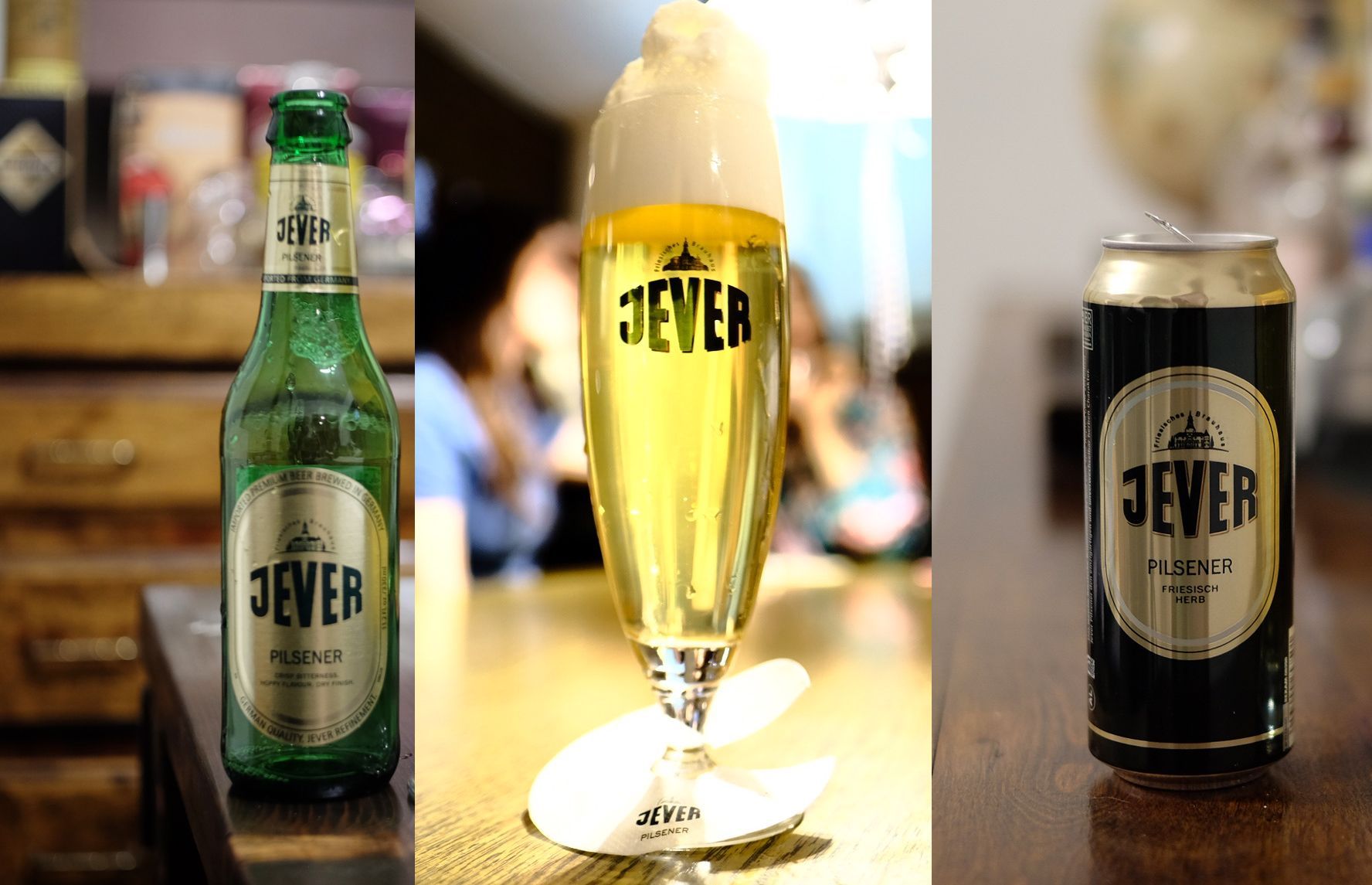
The Science of Bubbles
The way carbonation behaves explains much of this. Bottles, with their narrow necks, trap CO₂ and send it rushing across your tongue. Glasses let carbonation escape, softening the bite but amplifying aroma. Cans can lose CO₂ if seams are imperfect or if storage conditions fluctuate. Kegs keep beer under constant CO₂ pressure, ensuring bubbles stay intact until the pour.
- Bottle necks trap CO₂, keeping carbonation tight and prickly.
- Glasses let CO₂ escape, softening the mouthfeel but boosting aroma.
- Cans may lose CO₂ more easily if seamed poorly or stored warm.
- Kegs keep beer under constant pressure, maintaining bubble structure until poured.
거품의 과학
탄산 작용 방식이 이 문제의 상당 부분을 설명합니다. 목이 좁은 병은 이산화탄소를 가두어 혀를 타고 흐르게 합니다. 유리잔은 이산화탄소를 배출하여 씹는 맛을 부드럽게 하지만 향은 증폭시킵니다. 캔은 이음새가 불완전하거나 보관 조건이 변동하면 이산화탄소가 손실될 수 있습니다. 케그는 맥주를 일정한 이산화탄소 압력으로 유지하여 따를 때까지 거품이 그대로 유지되도록 합니다.
* 병목은 이산화탄소를 가두어 탄산을 단단하고 따끔거리게 유지합니다.
* 유리잔은 이산화탄소를 배출하여 입안을 부드럽게 하지만 향은 증폭시킵니다.
* 캔은 이음새가 불량하거나 따뜻하게 보관하면 이산화탄소가 더 쉽게 손실될 수 있습니다.
* 케그는 맥주를 일정한 압력으로 유지하여 따를 때까지 거품 구조를 유지합니다.
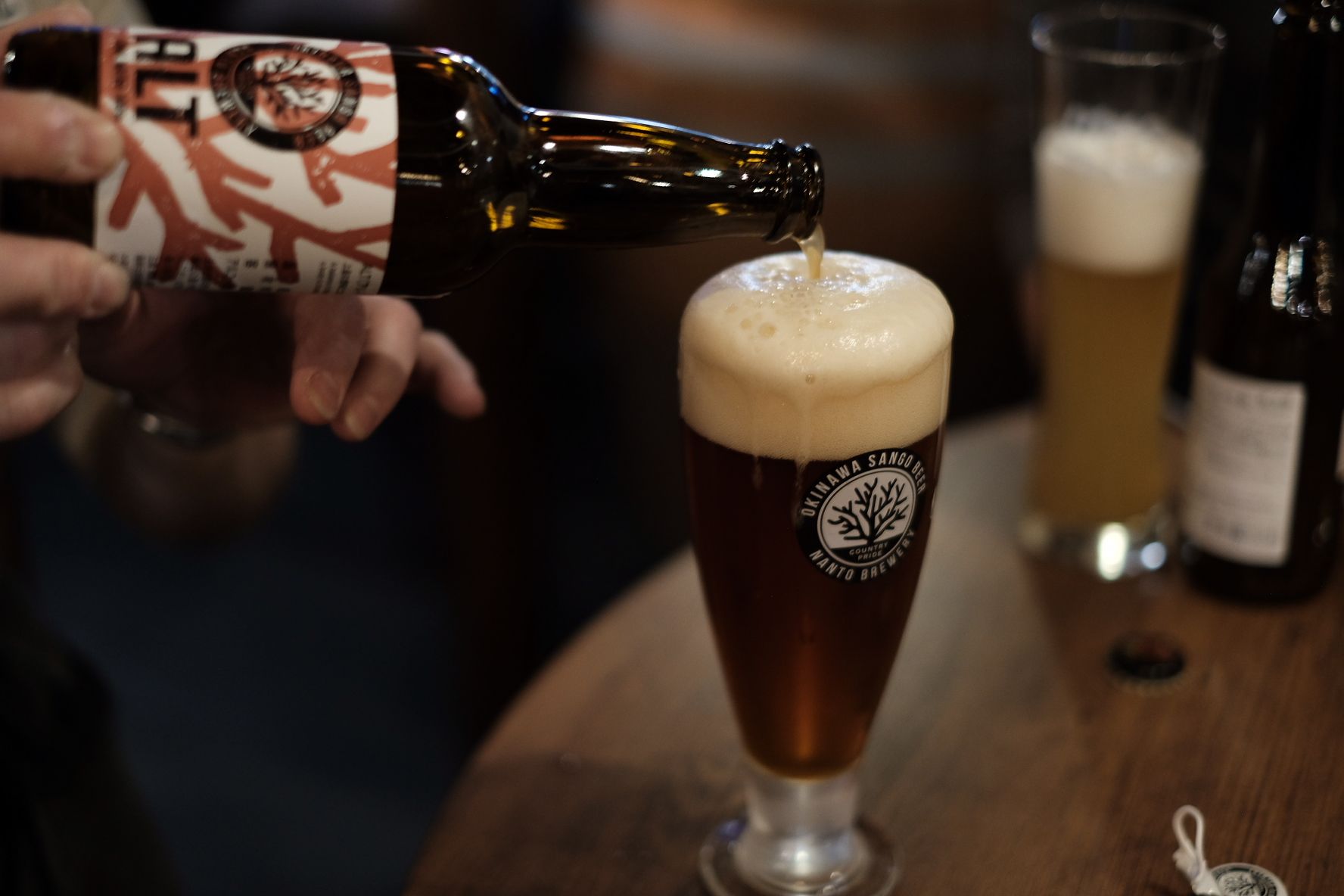
Style-by-Style Packaging Guide
Here is our opinion on how to enjoy some specific style at their peak level of "enjoyment"
- Hazy IPAs and NEIPAs: Best in cans, where light and oxygen are minimized.
- German Pilsners (like Jever): Best from bottles or draft, where crisp carbonation shines.
- Belgian Tripels, Saisons, and Dubbels: Bottles are ideal, especially when conditioned for natural carbonation and aging.
- Stouts and Porters: Forgiving in both, though barrel-aged versions belong in bottles.
- Sours and Mixed-Fermentation Beers: Traditionally bottled, though cans are emerging for lighter, everyday versions.
- Lagers: Crispest on draft or in bottles, though well-canned lagers can rival both.
Final Sip
Packaging isn’t just a container — it’s part of the beer’s flavor. The same batch can taste flat, vibrant, sharp, or round depending on whether it’s in a bottle, can, or keg. For breweries, packaging is both science and art. For drinkers, it’s a reminder that same beer, different package is rarely the same taste.
So next time someone tells you it’s all in your head? Hand them a bottle, a can, and a draft pour of the same beer — and let the bubbles speak for themselves.
스타일별 포장 가이드
특정 스타일을 최고의 "즐거움"으로 즐기는 방법에 대한 저희의 의견을 소개합니다.
* 헤이지 IPA와 NEIPA: 빛과 산소가 최소화된 캔에 담아 마시는 것이 가장 좋습니다.
* 독일 필스너(예버 등): 상쾌한 탄산이 돋보이는 병이나 생맥주에 가장 좋습니다.
* 벨기에 트리펠, 세종, 두벨: 병맥주가 이상적이며, 특히 자연 탄산화와 숙성을 위해 숙성된 경우 더욱 그렇습니다.
* 스타우트와 포터: 두 맥주 모두 부담 없이 즐길 수 있지만, 오크통 숙성 맥주는 병맥주가 적합합니다.
* 사워와 혼합 발효 맥주: 전통적으로 병맥주로 판매되지만, 가볍고 일상적으로 즐길 수 있는 캔맥주가 등장하고 있습니다.
* 라거: 생맥주나 병맥주 모두 상쾌한 맛을 선사하지만, 잘 숙성된 라거는 두 맥주 모두에 버금가는 맛을 선사합니다.
마지막 한 모금
포장은 단순한 용기가 아니라 맥주 맛의 일부입니다. 같은 맥주라도 병, 캔, 케그에 담겨 있는지에 따라 밋밋하거나, 생기 넘치거나, 톡 쏘거나, 둥글둥글한 맛이 날 수 있습니다. 양조장에게 포장은 과학이자 예술입니다. 애주가들에게는 같은 맥주, 다른 포장이라고 해서 똑같은 맛이 나는 경우는 거의 없다는 것을 일깨워주는 것입니다.
Recent Posts
